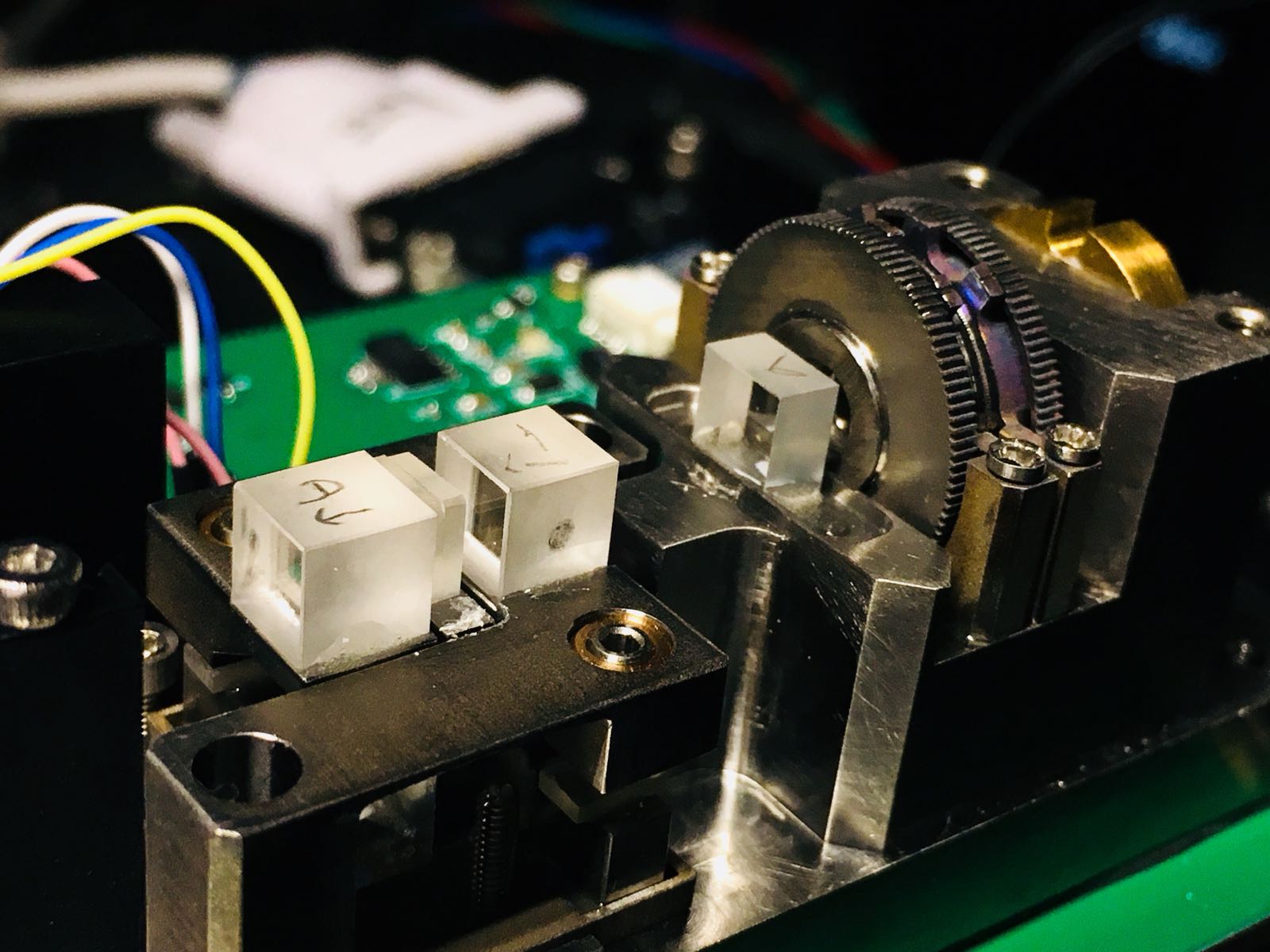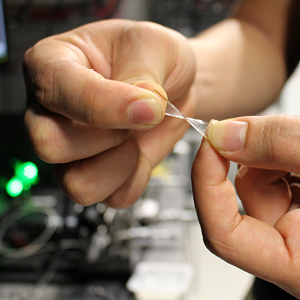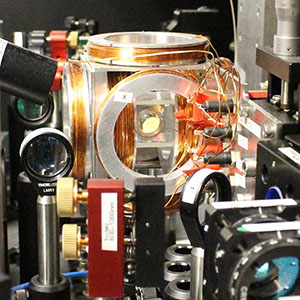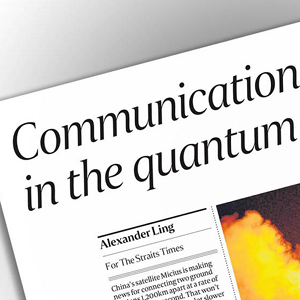Highlights
Design innovations smash a record for photon source brightness
 This entangled photon source is brighter than all that have gone before it in its class, thanks to two improvements in design reported by a CQT team in Optics Express. An input laser on the right shines through the crystal blocks to the left to create pairs of entangled photons.
This entangled photon source is brighter than all that have gone before it in its class, thanks to two improvements in design reported by a CQT team in Optics Express. An input laser on the right shines through the crystal blocks to the left to create pairs of entangled photons.
CQT researchers have broken a record for the brightness of an entangled photon pair source. In the process, they discovered that scientists have for decades been making such devices more complicated than they needed to be.
In a paper published in the 14 May issue of Optics Express, a team led by Alexander Ling report a photon source that generates 65,000 pairs of photons per second per milliwatt of input laser power. They have increased the brightness further since (described in a preprint).
The device works by a method known as spontaneous parametric down-conversion (SPDC). It uses nonlinear crystals - which interact strongly with input light - to create pairs of entangled photons.
The reported brightness is more than double that of the past record-holder among SPDC sources that use single domain crystals. Higher brightness has been achieved with multi-domain crystals, but these are sensitive to temperature, which makes them unsuitable for some applications.
Doubling up
Entangled photons are ingredients for schemes for quantum communication and quantum computing. Alexander’s team, for example, is building photon pair sources for satellites, with the end goal of distributing quantum encryption keys between distant points on the ground. In this case, the brighter the source the better, since many photons will be lost to absorption by the atmosphere between space and ground.
The paper reports two innovations in the design of the entangled photon source. They concern the way that the input laser and crystals are configured.
First, a laser is shone into the crystal. A few of the light particles, or photons, get absorbed entirely into the vibrations of the crystal. The crystal then releases the energy of a single photon into two lower-energy photons. Past devices used a series of four non-linear crystals to make these photons emerge entangled – meaning they shared a joint quantum state that gives the coordinated behaviour useful in technologies.
This paper implements an idea from author Alexander Lohrmann to reduce the number of crystals. Instead of four blocks of beta-Barium Borate, the team needed only two blocks plus a simple component known as a half-wave plate.
Nonlinear crystals have an internal directionality in how they interact with the light. Previous designs positioned the crystals with their directions rotated at 90 degrees with respect to each other. The new design has the crystals pointing the same way – a parallel configuration. It achieves the same end result by using the half-wave plate to rotate the light instead.
When the team calculated the effect of this design change, they expected a doubling of the brightness. What they measured was an even bigger improvement by about 40%.
Brightness boost
It turned out that extra boost had come from a design simplification the team was testing out. Researchers in the community had always made efforts to control the shape of the laser beam hitting the crystal, aiming to give it a circular cross-section. This involves adding optical gadgets, such as prisms, between the laser and crystal.
As an experiment with their source, the CQT team left these bits out. Because they are building for satellites, every opportunity to reduce mass and complexity is valuable.
“This all started with us saying let's just take our laser as it is, focus it down and see how bright it is. We went to the lab, did it, and found it actually gives an improvement,” says Aitor Villar, a PhD student and first author on the paper.
The source uses a laser diode that creates an elliptically-shaped beam. When the team redid the calculations for this beam shape, they confirmed it would deliver better brightness than a circular beam for their parallel configuration. This has to do with the way the light shifts direction within the crystal, an effect known as ‘walk-off’.
Calculations for efficiency for circular beams were first reported in a 1968 paper, giving a prescription for how to maximise the efficiency by changing the length of the crystal. The choice of a circular beam was probably because the calculations were easier.
“You always look for symmetry when you have a problem to solve,” says Aitor. From here, the research community acquired the convention of working with circular beams.
“Noncircular beams only came about because of laser diodes in the 80s, and they’ve only become widespread in the down-conversion community since the 2000s,” says Alexander Ling.
After seeing the efficiency improvement in the lab, the team discovered a 1972 paper by scientist Dirk Kuizenga that predicts cases where elliptical beams would do better. His work was little noticed: the paper has only around 14 citations. With the work by the CQT team, it acquires one more.
Learn more
Related Stories
 | Stretchy polymer makes good waveguides December 11 2017 |
 | Lens trick doubles odds for quantum interaction October 31 2017 |
 | Communications privacy in the quantum era June 18 2017 |






